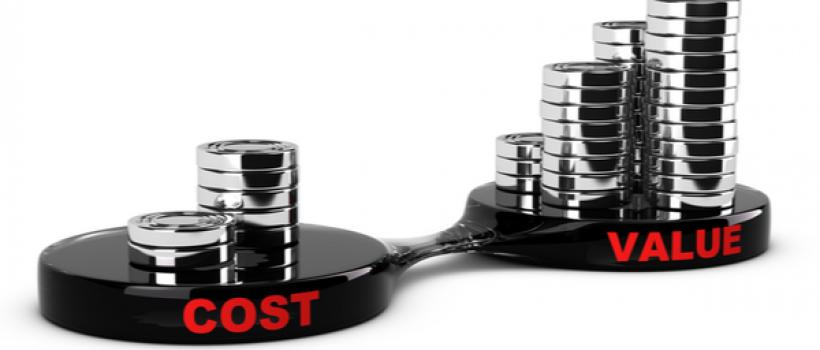
Pricing international e-commerce products is a challenge that more and more retailers are facing as international e-commerce continues to grow. In order to price international e-commerce products accurately, retailers selling across borders need to keep an eye on a more diverse set of factors than their domestic counterparts.
International e-commerce products pricing in today’s world is one part economics, one part technology, one part politics, and one part psychology. We’ll break down how each of these fields factors into your pricing strategies and what you can do to keep tabs on them all to ensure your business remains competitive in the global marketplace.
Moving Your International E-Commerce Products Successfully
In 2018, global e-commerce sales grew by a staggering 18% on average. Now, e-commerce accounts for more than 15% of the global retail market. But despite the growing prevalence of domestic and international e-commerce, many retailers still haven’t adopted e-commerce: 74% of U.S. small businesses don’t have e-commerce capabilities on their websites.
Even though the competition is less dense online compared to brick-and-mortar retail, e-commerce products pricing continues to challenge online retailers. This is, in part, because the internet has made it so easy to comparison shop for a product in a global marketplace. In fact, nearly half (46.38%) of consumers say they’re comparison shopping online while shopping in-store.
Another element of the e-commerce products pricing challenge is the fact that pricing changes happen at hyperspeed online. Amazon, the e-commerce juggernaut, changes prices on items 2.5 million times a day—which means the average product will have its price changed nearly every 10 minutes. This model isn’t easy to replicate for the average e-commerce retailer, but there are important lessons to be learned from both the psychology and technology behind their strategy.

On top of that, international e-commerce retailers have to add in the challenge of selling to an international audience. This means localizing your online content, including translating the language and making the currency and purchase options consistent with the local culture. Plus, international sellers must navigate the challenges of cross-border logistics. Thankfully, these challenges can be minimized with the help of an experienced international shipping partner.
Let’s get into the factors that affect every international e-commerce product’s price.
-
The Economics of International E-Commerce Products Pricing
The economy is the most basic element of e-commerce products pricing. International e-commerce retailers have to factor in the economics of the company, the consumer, and the competition in every transaction.
To correctly price an item for your company’s bottom line, you first have to understand the full landed cost of selling an item internationally. In addition to the cost of the goods and the labor needed to create them, you have to account for duties and taxes, shipping, and local fees. After understanding the true cost, then you must factor in a profit margin.
Second, it’s important to understand the economics of your international consumers. A good deal for one country’s consumers may not be a good deal for another’s. Are your customers price sensitive? In other words, are they loyal enough to your brand to forgive changes in price, or will they immediately begin to shop around?
Keep in mind that international consumers bear a higher cost for shopping internationally online. They have to consider the duties, taxes, and shipping costs in comparison with shopping at a local brick-and-mortar. Before jumping into a new market, your company must understand the outlook for specific products in the area.
Supply, demand, and a willingness to pay vary by region. Brazil, for instance, accounts for 9.4% of the global beauty products market share. Consumers there are more than willing to pay for the best beauty products online, which is why it’s a growing focus for big online retailers like Amazon.
At the same time, companies have to keep an eye on the competition in their target market, which includes both other e-commerce retailers and local brick-and-mortar stores. Selling based on price alone often isn’t enough for international e-commerce retailers—they also need to offer an exclusive brand or a more premium experience overall to differentiate themselves.
This may sound like a lot to keep track of but with the right technology and the right partners, retailers can find the price points that allow their products to remain competitive internationally.
-
The Technology Behind International E-Commerce Products Pricing
Large online retailers are able to manipulate prices because of the massive amount of data they collect on consumer habits. While small e-commerce businesses are not likely to employ such an intricate automated strategy on billions of products, technology can also help them stay on top of the competition’s prices.

These days, there’s a wide selection of competitive data providers that will crawl the internet for your competition’s prices on a given item and give your company insights on the best price points for your international e-commerce products.
According to business software search company Crozdesk, the main advantage of automatically matching products is speed. Today’s automated technology and machine learning algorithms can match 1,000 products per minute (compared with 600 manual matches per day), allowing e-commerce retailers to launch quickly, scale easily, and plan efficiently. On the other hand, automated price matching algorithms are only as good as the data going into them, so there is still some human element needed to price check.
By combining the speed of today’s technology with human care, retailers have the tools they need to competitively price their international e-commerce products successfully.
-
The Politics of International E-Commerce Products Pricing
More than once in the last year, politics have had an outsized effect on e-commerce products pricing. Policy changes can throw international e-commerce retailers for a loop if they’re not informed.
The renegotiation of NAFTA (the trade agreement among the U.S., Mexico, and Canada) into the United States-Mexico-Canada Agreement (USMCA) led to increased tariffs on steel and aluminum products that were lifted only recently. Now that the agreement is closer to ratification, we know that the USMCA will make it easier for shoppers in Canada and Mexico to make online purchases in the U.S., since de minimis thresholds will be raised and duties for online orders under certain values will not be imposed.

The tariff war with China, on the other hand, threatens to dramatically affect international e-commerce. Consider Apple’s iPhone, which is made in China. According to CNBC, iPhone prices would need to go up by around 14% to offset the 25% tariffs being imposed on consumer goods. That means consumers could pay nearly $150 more per iPhone.
While politics and trade agreements are out of the hands of e-commerce retailers, it’s important to keep up to date about these issues to minimize any losses.
-
The Psychology of Pricing International E-Commerce Products
In order to successfully price products for international markets (or any market), retailers need to employ psychological techniques. How you market yourself to consumers plays a big part in whether they see your products’ prices as a good bargain or a bad deal.
As we mentioned, psychology plays a large part in Amazon’s constantly changing prices. Undercutting competitors’ prices on popular items gives consumers the sense that Amazon is the best deal on all items, even though more unique items often have higher markups.
According to Quicksprout, every element of a product’s price plays into the psychology of the buyer, from the font size to the simplicity of the numbers used (“10 for $10” or “$99.99” instead of “$100”). But beyond price, it’s just as important to understand the value you’re providing to consumers.
To price your international e-commerce products successfully, you also have to position your products successfully. A U.S.-based e-commerce retailer may not be able to market itself as a bargain-priced seller in Latin America when it’s competing against cheaper and quicker local brick-and-mortars. But marketing itself as a luxury retailer or an exclusive purveyor of products that aren’t available in the target country can help an international e-retailer justify higher costs to customers.
Logistics is a critical, and often under-considered, psychological factor for consumers. While shipping and logistics costs aren’t usually a surprise for online consumers, they can be a major factor in whether consumers become customers. According to Barilliance, the number one reason for shopping cart abandonment is “unexpected shipping costs.”
The prospect of paying high shipping costs can turn a good deal into a bad deal very quickly for consumers. You can mitigate this effect by choosing a logistics partner that helps you keep those costs down. SkyPostal offers an excellent combination of price and speed for parcel delivery to Latin America.

One logistics element that many companies overlook is the returns process. International returns are a hassle for consumers and a big cost for either the consumer or the company. Having a clear return policy, pre-printed return labels (when feasible), and customer service in the destination country can go a long way toward overcoming the anxiety people feel about shipping and return costs.
Don’t shy away from logistics. Rather, clearly position the value of your logistics process just as you would position the value of your products.
After you’ve considered all of these factors, it’s important to remember to build in a profit margin that will help you sustain and grow your business.
SkyPostal: A Logistics Partner for Your Target Market
With so many factors to consider when it comes to international e-commerce products pricing, your company doesn’t have to go it alone. Partnering with a logistics provider that has experience with your target market can help you manage the many costs that go into setting a successful price point.
Don’t miss out on your chance to establish an early presence in Latin America’s emerging e-commerce market. Contact SkyPostal today to see how our decades of experience shipping to Latin America can help your e-commerce business grow in the region.

